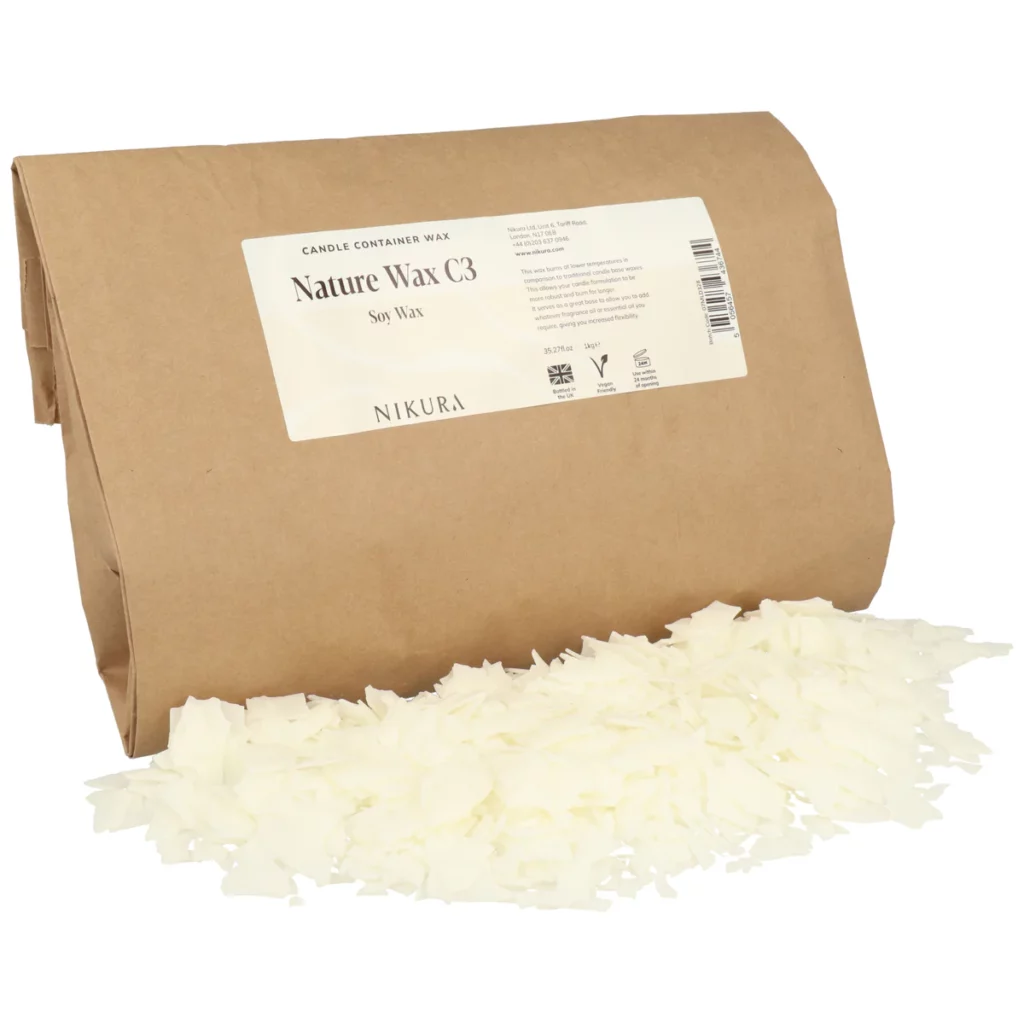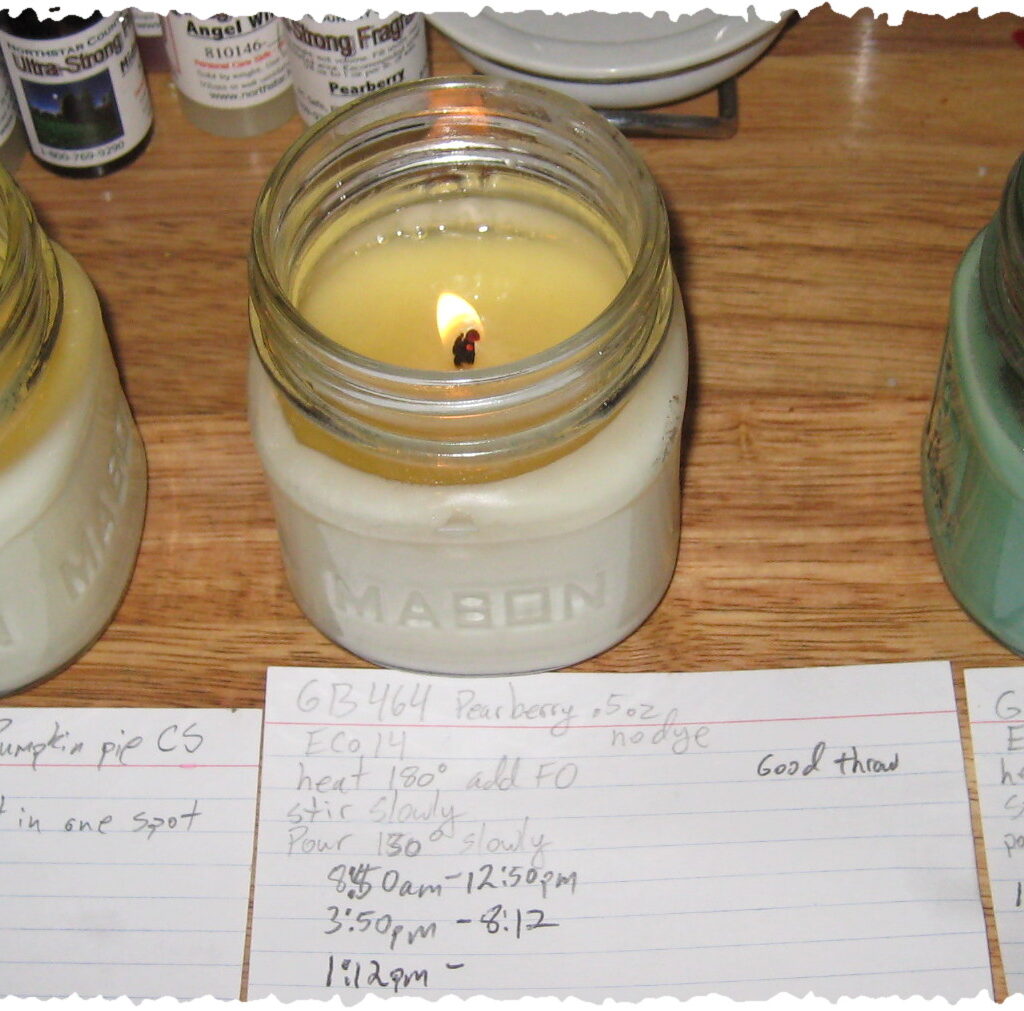Candle making is a popular and enjoyable hobby that allows individuals to create their own unique scented candles. One of the most important decisions that candle makers face is choosing the right wax for their creations. Two popular options in the candle making world are C3 soy wax and 464 wax. In this article, we will explore the differences between these two waxes and help you determine which one is best for your candle making needs.
Understanding the Basics of Candle Making
Candle making is a fascinating craft that has been around for centuries, dating back to ancient times when candles were made from tallow or beeswax. Today, candle making involves a process of melting wax, adding fragrance and color, and pouring the melted wax into containers with wicks. The wax used in candles is a crucial component that determines the burn time, scent throw, and overall quality of the finished product.
Many candle makers also value C3 soy wax for its versatility. It can be easily colored and scented to create unique and personalized candles. Whether you prefer vibrant, eye-catching colors or subtle, soothing scents, C3 soy wax provides a blank canvas for your creative candle-making endeavors.
One interesting aspect of candle making is the variety of waxes available for use. From paraffin wax, soy wax, beeswax, to palm wax, each type of wax has its unique characteristics and benefits. For example, soy wax is known for its clean burn and excellent scent throw, while beeswax is prized for its natural and long-lasting burn.
The Role of Wax in Candle Making
Wax plays a vital role in candle making as it serves as the fuel for the candle. It is the wax that allows the candle to burn steadily and release its delightful fragrance into the air. The type of wax chosen can significantly impact the performance and aesthetics of the final product, making it an essential consideration for candle makers.
Key Factors to Consider in Choosing Candle Wax
When selecting the right candle wax for your project, there are several key factors to take into account. These factors include the type of wax, melting point, scent throw, burn time, and availability. Additionally, personal preferences such as color and texture, budget constraints, and environmental considerations like sustainability and biodegradability may also influence your choice of wax.

An In-Depth Look at C3 Soy Wax
C3 soy wax is a popular choice among candle makers. It is made from soybean oil and is known for its clean burning properties. It is a natural, renewable, and biodegradable option that appeals to those who prefer environmentally friendly products. Candle enthusiasts appreciate C3 soy wax for its ability to hold fragrance oils exceptionally well, resulting in candles that fill a room with a delightful aroma.
The Composition of C3 Soy Wax
C3 soy wax is typically a blend of hydrogenated soybean oil and other vegetable oils. It is formulated to have a smooth texture and excellent fragrance retention. It is also free from additives and preservatives, making it a popular choice for those with sensitivities. This composition ensures that candles made with C3 soy wax burn cleanly and evenly, without emitting harmful toxins into the air. Learn more about harmful toxins at https://www.health.ny.gov/environmental/chemicals/toxic_substances.htm
Furthermore, the renewable nature of soybean oil used in C3 soy wax production contributes to sustainable practices in the candle-making industry. By choosing C3 soy wax, candle makers support eco-friendly initiatives and reduce their carbon footprint.
Pros and Cons of Using C3 Soy Wax
One of the advantages of using C3 soy wax is its excellent scent throw. It has the ability to hold a high concentration of fragrance oil, resulting in a strong and long-lasting scent. Additionally, it has a lower melting point compared to some other waxes, which makes it easier to work with. Candle makers appreciate the ease of use and superior scent diffusion offered by C3 soy wax.
On the downside, C3 soy wax can be more expensive compared to other options. It also has a tendency to produce a rough and textured surface after cooling, which may not appeal to those who prefer a smooth finish on their candles. Despite these drawbacks, many candle makers find the benefits of using C3 soy wax outweigh the challenges, leading to high-quality, environmentally conscious candle creations.
Exploring the Features of 464 Wax
464 wax, also known as Golden Brands 464, is another popular choice for candle making. It is a soy-based wax that offers a balance between performance and affordability.
When delving into the composition of 464 wax, it becomes evident that soybean oil is the primary ingredient. This natural wax may also incorporate other additives sourced from nature to elevate its overall performance. Candle makers appreciate 464 wax for its smooth and creamy consistency, making it a delight to work with during the candle-making process.
What Makes Up 464 Wax?
464 wax is primarily composed of soybean oil. It may also contain other natural additives to enhance its performance. It is known for its smooth and creamy texture, which makes it easy to work with.
Exploring the realm of 464 wax unveils a world where soybean oil takes center stage. This versatile wax often includes a blend of natural additives carefully selected to enhance its properties. Crafters find solace in the smooth and creamy texture of 464 wax, as it lends itself effortlessly to the art of candle making.
Advantages and Disadvantages of 464 Wax
One of the advantages of using 464 wax is its excellent scent throw. It has the ability to hold a high concentration of fragrance, resulting in a strong and long-lasting aroma when the candle is burned. Additionally, it has a lower melting point compared to paraffin wax, which makes it safer to use.
Despite its numerous advantages, 464 wax does come with a few drawbacks. While it excels in scent diffusion, some users may find that it burns at a slower rate than alternative waxes, potentially impacting the longevity of the candle. Moreover, achieving a flawless finish with 464 wax often necessitates the incorporation of additional additives like stearic acid, adding an extra layer of complexity to the candle-making process. Click here to learn more about stearic acid.
As candle enthusiasts continue to explore the vast array of wax options available, 464 wax stands out for its unique blend of affordability, performance, and versatility. Whether crafting candles for personal use or creating a line for sale, the distinctive characteristics of 464 wax make it a compelling choice for both novice and experienced chandlers alike.
Comparing C3 Soy Wax and 464 Wax
When comparing C3 soy wax and 464 wax, several factors need to be considered to determine which one is best for your candle making needs.
One important aspect to consider is the source of the wax. C3 soy wax is made from pure soybean oil, making it a natural and renewable resource. On the other hand, 464 wax is a blend of soy wax and other vegetable waxes, which may impact its performance and environmental sustainability.
Performance Comparison: Burn Time and Scent Throw
Both C3 soy wax and 464 wax offer excellent scent throw. However, C3 soy wax tends to have a stronger and longer-lasting fragrance compared to 464 wax. In terms of burn time, C3 soy wax typically burns slower, resulting in a longer-lasting candle.
Furthermore, C3 soy wax has a lower melting point than 464 wax, which can result in a more even burn and better glass adhesion. This can lead to a cleaner and more aesthetically pleasing candle overall.
Cost Comparison: C3 Soy Wax vs 464 Wax
Cost is another important factor to consider when choosing a wax. C3 soy wax is generally more expensive compared to 464 wax. However, the higher cost may be offset by its superior performance and environmental benefits.
It’s also worth noting that C3 soy wax is known for its excellent scent retention, meaning that the fragrance of your candles will last longer and remain strong throughout the entire burn. This can be a significant factor for candle makers who prioritize long-lasting and impactful scents in their products.

Making the Right Choice for Your Candle Making Needs
When it comes to choosing between C3 soy wax and 464 wax, it ultimately boils down to your specific candle making goals.
Before diving into the decision-making process, it’s essential to understand the unique characteristics of each type of wax. C3 soy wax is known for its excellent scent throw and longer burn time, making it a popular choice among candle makers who prioritize these qualities. On the other hand, 464 wax is favored for its affordability and ease of use, making it a great option for beginners or those looking for a budget-friendly alternative.
Assessing Your Candle Making Goals
Consider factors such as burn time, scent throw, cost, and personal preferences. If you prioritize a strong scent throw and longer burn time, C3 soy wax may be the better option for you. On the other hand, if affordability and ease of use are your main concerns, 464 wax may be the more suitable choice.
When selecting the right wax for your candles, don’t forget to take into account the type of candles you plan to create. For instance, if you’re aiming to make highly fragrant container candles that fill a room with a luxurious aroma, C3 soy wax might be the ideal choice. On the other hand, if you’re experimenting with different candle shapes and sizes, 464 wax’s versatility and ease of use could be advantageous.
Final Thoughts on Choosing Between C3 Soy Wax and 464 Wax
Ultimately, the choice between C3 soy wax and 464 wax depends on your priorities and preferences as a candle maker. Both waxes offer their own advantages and disadvantages, and it’s important to experiment and find the wax that best suits your needs.
Whether you choose C3 soy wax or 464 wax, the key to successful candle making lies in finding high-quality ingredients, experimenting with different fragrances, and perfecting your technique. So, go ahead and unleash your creativity to create beautiful and fragrant candles that will delight your senses.
Other resources: Bulk Candle Wax in Australia Save Big on Quality Wax
